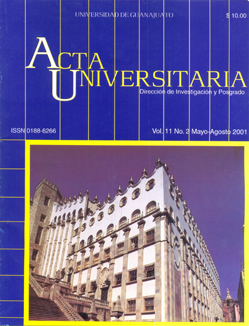LA MEMBRANA PERITRÓFICA EN Prostephanus truncatus (HORN) (COLEÓPTERA: BOSTRICHIDAE): ¿BLANCO PARA SU CONTROL?
Publicado 2001-08-01
Palabras clave
Cómo citar
Resumen
Prostephanus truncatus (Horn) es un insecto plaga del maíz almacenado en México, América Central, parte de América del Sur y se está expandiendo rápidamente en África desde que fue introducido a este continente. El control de este insecto en los almacenes se lleva a cabo con el uso masivo de insecticidas. Con el objeto de encontrar una alternativa para su control, se realizó un estudio de microscopía electrónica en el intestino medio del insecto adulto y su larva. Se detectó, en el intestino medio de P. truncatus adulto, la presencia de una membrana peritrófica. Esta membrana está formada por una red irregular compuesta de varias capas, la cual está ausente en el intestino medio del último estadío larvario de P. truncatus. Esto indica que su formación tiene lugar, principalmente, durante el período de pupa, por lo que P. truncatus podría ser controlado biológicamente usando plantas transgénicas con la información específica para interferir en la síntesis de esta membrana.

